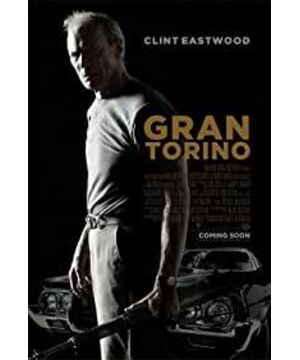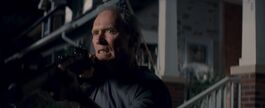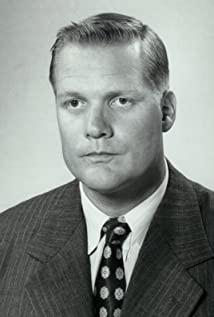John Wayne has become a symbolic figure in American culture by playing western cowboy roles after another. The media believes that with his super personal charm and influence, if John Wayne decides to run for the president, he will definitely High votes are successful.
A period later than John Wayne, he is also a leader in American Western films. Clint Eastwood is more comprehensive in film art achievements. His starring in the Red Dead trilogy is deeply rooted in the hearts of the people and is known as Western films. The iconic film of the golden age, its tough guy image is a bit chivalrous and more grounded, so it is dubbed "urban cowboy" by the audience.
What is lamentable is that no genre film has a weak and weak decline. After those exciting routines and elements are used, aesthetic fatigue will make a genre film a lightning protection zone for the audience.
After the 1990s, Western films have long lost their former glory. From the box office and film critics, Western films seem to be unwelcome.
Westerns urgently need the addition of fresh elements, and innovation is difficult. It seems that it is a shortcut to integrate other types of elements to create new westerns.
Clint Eastwood, who acted and directed by You, took on this task fatefully.
As the last cowboy in Hollywood, Clint Eastwood directed a very interesting film "Classic Cars" in 2008, which was the last film in which he starred.
Clint Eastwood not only has a legendary career as an actor, but his solid director and screenwriting skills have won high praise from academic film critics.
The script is solid and well-fitted; the lines are excellent and the metaphors are profound.
The films he directed also give people the feeling of a tough guy, but they are mixed with chivalrous tenderness.
The story that comes slowly, accumulates emotions, no more, no less, no rush or slow, often the sublimation of emotions is quietly completed at the climax of the story, and your heart is tumbling.
"Classic Car" is such a film.
The film also has two funerals as the beginning and end of the film.
At the beginning of the film, we witnessed the funeral of Walter's wife, a retired Ford worker.
Throughout the funeral, Walter's face was filled with cynicism and dissatisfaction.
Dissatisfied with the church; dissatisfied with the family, whether it is direct sons or granddaughters.
He was abandoned by this world, and now even the last dependence has left him.
He needs to integrate into this world, but he is reluctant. At least for now, he hopes to keep the long past, his world, and keep the beautiful qualities in his heart.
The end of the film is Walter's own funeral.
Although it is a time to say goodbye, after the story is rendered, we obviously feel that in the funeral at the end, the emotions of the characters are not only sad, but also hopeful.
The funeral at the front symbolizes death and abandonment, while the funeral at the end of the funeral, though dead, is alive, bringing warmth to people.
The two funerals one after the other, the obvious contrast, made us feel the obvious change in the arc of the characters, the master-level story and the conflict of the plot, and the natural expression of all this is empathetic.
The story of "Classic Cars" is not novel.
The stubborn, conservative, and inaccessible Walter continued to stick to the defeated white neighborhood. This was his last home.
But this neighborhood was gradually occupied by the Hmong from outside, one of the ethnic minorities in Vietnam.
Walter felt extremely uncomfortable with this phenomenon.
The departure of his relatives made his spiritual world fall apart, and now even the land under his feet seems to be driving him away.
The turning point came when the sister and brother of the Miao people next door intervened in Walter's life and brought him the sunshine of life.
Sister Su is humorous and talkative, smart and understanding.
The taciturn brother Tao, involved in the fight of the Hmong gang, did not know each other while trying to steal Walter's Gran Torino classic car.
Under Su's leadership, Walter accepted this ethnic group of foreign cultures, and was worshipped by all the Miao people in the neighborhood because he drove away the Miao gang, and regarded him as a hero.
In the more in-depth exchanges with Su Hetao, they established a deep relationship that surpassed friends and approached family members.
The collision of the two different cultures has produced a good complementarity.
Walter got the long-lost family affection, and Tao established his identity as a man under Walter's hand-in-hand education, and successfully integrated into the American cultural circle and found a new direction in life.
The ideas that Walter transmitted to Tao were all American.
Seeing the girl you love, you must actively pursue it;
you must find a balance between profanity and sociality when speaking, know how to do what you like, communicate in a way that Americans like, and get opportunities;
help Tao find a job and give him a chance to truly blend in American society has a clear goal for the future;
Walter sees Tao's potential, and he doesn't like the gang disrupting the future of this ordinary but kind-hearted young man.
Facing the continuous squeeze and provocation of the Miao gang.
For the first time, Walter chose to fight violence with violence.
The terrible consequences were unexpected to him.
The gang raided Tao's home and beat and raped Su.
This made Walter feel deeply guilty and was close to collapse.
Facing Tao who was about to retaliate with teeth, Walter had his own ideas.....
The story of "Classic Cars" is not new . The master’s skill in the grasp of details enhances the quality of the film, which is highlighted by the successive changes in the characters. Asking the question while silently melting the ice of the audience's emotions.
There is a scene that vividly shows the close relationship between Walter and Tao.
Walter rejected the boy at first because of Tao's car theft.
But in the constant getting along, he found Tao, who is right in nature.
The old Walter couldn't dispose of the freezer in the basement alone. For the first time, Walter, who was stubborn, independent, and unwilling to trouble others, took the initiative to seek help from Tao.
We only want to trouble those closest to us.
Tao resolutely agreed, but there is a condition that he must act as the main force to pull the freezer above, while Walter is responsible for pushing it below.
As a retired soldier and a lifetime worker, the stubborn Walter was persuaded by Thao who showed a man's toughness for the first time, and he reluctantly agreed, but he was very pleased.
When selling this freezer at a low price, he revealed for the first time that Tao is his friend, so the price can be given symbolically.
The location of the transporting refrigerator, the subtle facial expression, the processing of the wrapping lines, and the handling of this important scene without deliberately or sensationally.
This is the master's "stability"!
In addition to the delicate scene design, the biggest charm of "Vintage Car" is actually the application and innovation of western film elements. Watering this modern story with the model of a Western movie, and with the blessing of Clint Eastwood's highly symbolic personal symbolic charm, what we see is actually a Western movie.
Outsiders enter a foreign land and accidentally become protectors of locals in places outside the law. This is a routine used in Western films.
The ending of a Western movie is usually the failure of the protagonist to integrate. Although helping the locals resist the violence, the protagonist either sacrifices or continues to live a wandering life, which does not belong to his world after all.
Times change, heroes are late, and the world of cowboy heroes no longer exists.
The wild farming civilization was completely defeated in the face of the regularized modern civilization.
"Classic Cars" replaced these western elements, the gang became the perpetrators of the locals, and this American neighborhood became the world of the Miao people, and Walter became an outsider and seemed out of place.
But Eastwood changed the ending of the story under the sign of ideology. Although he lost his life, he left a kind of tough guy-style American spirit in the Miao neighborhood and implanted it in the Miao sisters and brothers. Mind.
At his funeral, the priest was joking, and the Miao people attended in their own national costumes.
While sitting with Walter's American-style family, there is a Hmong on the other.
The two cultures temporarily gave up the opposition, chose to merge, and chose to accept each other.
At the end of the film, Tao drove the veteran Ford that Walter had left him, and drove into the center of the American city, which symbolized a more advanced civilization.
The theme of fusion is vividly displayed on the screen.
By sacrificing themselves, white Americans completed the atonement in religious sense, rebirth on the spiritual level, and gave the future to the young Hmong from outside.
The ideology of this conservative party prevented the film from being accepted at the time. Although the film maintained a high score of 8.6 on the Internet, it did not cause a disturbance that year.
Here, Fatty clicks to the end, don't go into details.
It's just that the improved method of this new western movie is quite meaningful.
Each genre will leave a deep impression on fans, and familiar elements contain our memories of watching movies and memories of life.
When these elements appear on the screen, our memory will be activated, life and movies will automatically intersect, forming an intertextual resonance.
Even if the method changes, the scene will be updated, and when a specific element appears, the audience can recognize it at a glance.
In the film, Walter's pistol uses hands instead of guns, and even Walter's actor Eastwood himself is the key prop to activate elemental memory.
Innovation is not easy. The decline of genre films and ZTE require continuous breakthroughs and self-renewal by filmmakers.
It suddenly occurred to me that in the past ten years, there has been no obvious turnaround in mainland movies in war and martial arts genres.
I don’t know, who will be the key figure in this turning point?
Backstage replied, classic car, fat brother sent a thought.
View more about Gran Torino reviews











